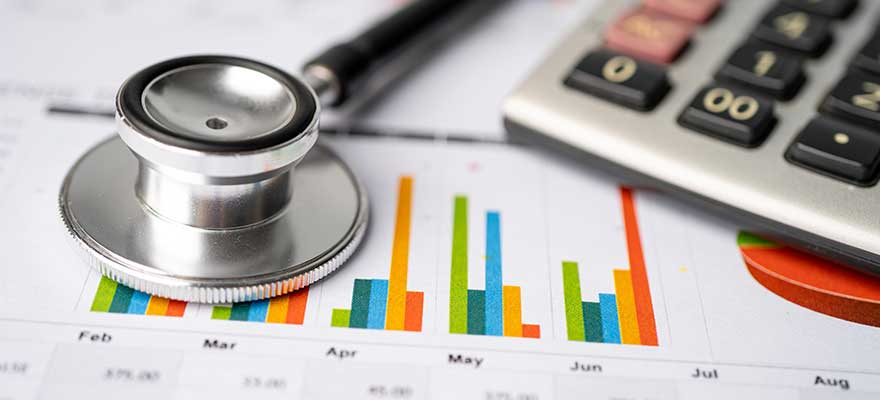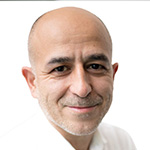New Studies on Transcranial Pulse Stimulation
The Clinical data on TPS-Therapy continues to evolve – Long-term Observations from the University of Düsseldorf
Currently, numerous studies, including large double-blind, randomized, and placebo-controlled trials, are underway, being evaluated, or already in preparatory publication. In several countries at once, interest in the possibilities of TPS therapy has grown strongly, and so we will receive more data from a wide variety of universities that can clinically prove what we experience every day in our practices.
At the “32nd International Congress of Clinical Neurophysiology (ICCN 2022)” in Geneva, Switzerland, neurologist Prof. Lars Wojtecki, MD, last week presented new clinical results on Transcranial Pulse Stimulation in Alzheimer’s disease patients.
A team around Prof. Lars Wojtecki, head physician of the Clinic for Neurology and Neurorehabilitation at the Hospital zum Heiligen Geist Kempen, academic teaching hospital of the Heinrich-Heine-University Düsseldorf (HHU), had investigated the effect of ultra-short shock wave pulses of Transcranial Pulse Stimulation in Alzheimer’s patients with different degrees of disease in a pilot study and documented it closely with EEG recordings. In collaboration with researchers from the Max Planck Institute, Frankfurt/Main, the University of Marburg, and the University of Giessen, the data in turn confirm those results from the Medical University of Vienna, University Department of Neurology, both in terms of the extent of cognitive improvements and in terms of low side effects.
Patient:in selection and methodology: heterogeneous group had MMST scores between 2 and 27 before starting TPS
To initially observe the influence of Transcranial Pulse Stimulation on the brain functions of persons suffering from Alzheimer’s dementia in an objective and broader manner, the group of subjects was not homogeneous but deliberately selected to be heterogeneous. Thus, the 10 patients included those with an MMST score (MMST stands for Mini-Mental-Status-Test, a test procedure for recording cognitive disorders) from a minimum of 2 to a maximum of 27; the score “2” here stands for very severe dementia, the score “27” indicates mild or possibly just beginning dementia.
Participants:received four to 12 sessions with the shockwave system, with six treatments within two weeks and booster treatments of one session every four weeks thereafter. In addition to using various measures (e.g., ADAS, MMST, MoCa, BDI) to assess the cognitive and affective (behavior predominantly governed by brief, impulsive emotional responses) constitution, the researchers additionally employed longitudinal (related to the longitudinal axis of the head) EEG recordings. These are studies using electroencephalography (EEG), which allows the electrical activity of the brain to be summed and graphed by recording voltage fluctuations on the surface of the head. EEG recordings were performed before and after the first session and subsequently after the entire cycle of six treatment sessions. Corresponding data from a period of one to 24 weeks, or six months, are now available.
Result: Varying improvements in all subjects, consistent changes in entropy in the EEG
All patient:s showed improvements in at least one of the neuropsychological tests, and caregivers confirmed increases in activities of daily living in most participant:s. A significant mean change was noted especially in the ADAS sum score at 18%. “ADAS” stands for “Alzheimer’s Disease Assessment Scale” , an assessment scale for severity assessment and progression in Alzheimer’s dementia and other dementias. Although some patients showed only slight improvements, because the group was selected heterogeneously up to severe Alzheimer’s dementia, the most striking improvement was 40%. In addition, a clear improvement in mood was observed in some patients. Finally, the EEG recordings showed an increase in brain power in all frequency bands in all participants after the first session. In addition, more consistent (more permanent or consistent) changes in EEG entropy, that is, the progression from a disorder to a clearer arrangement of brain waves, were subsequently seen after the treatments.
Conclusion and Prospect
Prof. Wojtecki, whose scientific work and research focuses incidentally on cognitive and emotional functions of neural networks and their modulability by brain stimulation, calls for more data and subgroups for analysis after this sample. Prospective controlled trials – in prospective clinical trials, data are collected and analyzed from the time of study initiation, not before – would be the next step in further proving the efficacy of Transcranial Pulse Stimulation, according to the researchers. In addition, they see EEG entropy as a promising biomarker tool regarding patient response to TPS therapy.
Source:
https://www.sciencedirect.com/science/article/abs/pii/S1388245722000918


